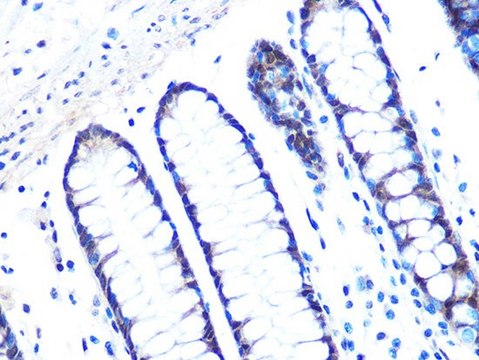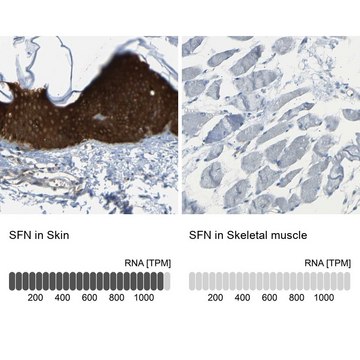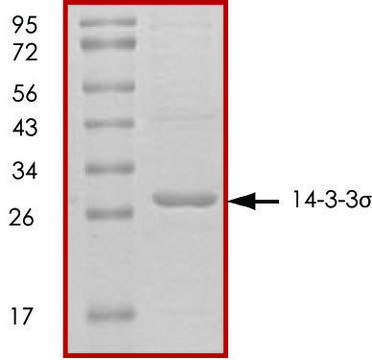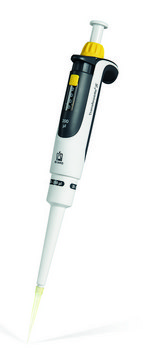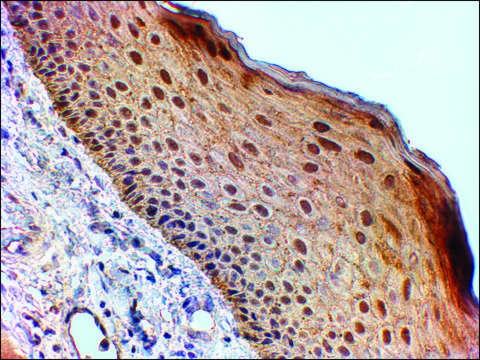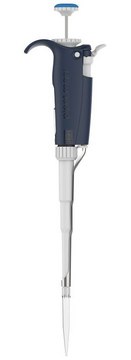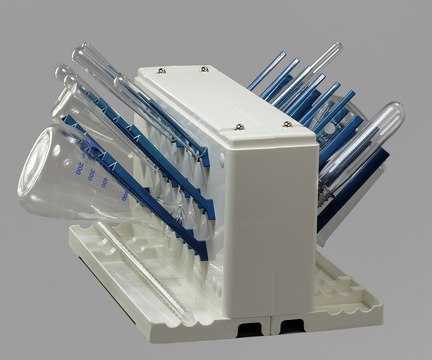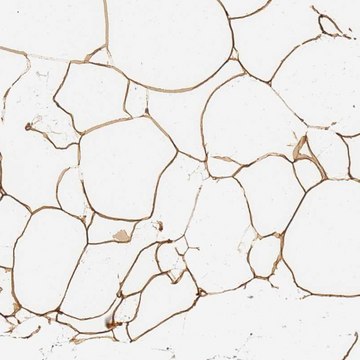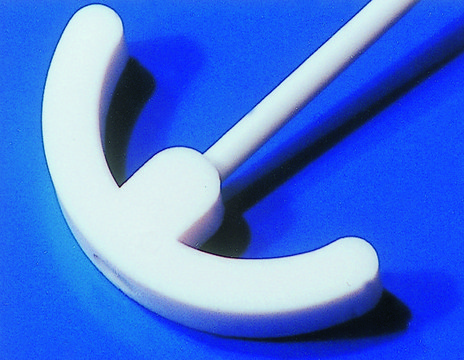推荐产品
生物来源
rabbit
质量水平
抗体形式
affinity purified immunoglobulin
抗体产品类型
primary antibodies
种属反应性
human
技术
immunohistochemistry: 1:2,000-1:10,000
immunoprecipitation (IP): 2-5 μg/mg
western blot: 1:2,000- 1:10,000
登记号
NP_006133.1
运输
wet ice
储存温度
2-8°C
靶向翻译后修饰
unmodified
一般描述
Rabbit anti-14-3-3 Sigma or stratifin is mapped to human chromosome 1p36.11. 14-3-3σ protein is expressed as seven isoforms and has molecular weight in the range of 25 to 30 kDa. It is an acidic homodimeric protein and harbors pleckstrin homology (PH) domain. 14-3-3σ is highly expressed in epidermis.
免疫原
The epitope recognized by PLA0201 maps to a region between residue 198 and 248 of human 14-3-3 sigma using the numbering given in entry NP_006133.1 (GeneID 2810).
应用
Rabbit anti-14-3-3 Sigma Antibody, Affinity Purified has been used in the pull down assay for Rho associated coiled-coil containing protein kinase 1 (ROCK1) proteins and heat shock 70 kDa 4 protein (Hsp74) in HCT116 cancer cells.
生化/生理作用
Rabbit anti-14-3-3 or stratifin participates in several biological events including apoptosis and cell differentiation. It regulates the transcription matrix metallopeptidases (MMPs) in fibroblasts and may serve as therapeutic potential in wound healing. 14-3-3σ is less expressed and is hyper methylated in breast cancer cells. It plays a key role in linking signalling proteins and in the enhancing of protein kinase C functionality. A mutation in the stratifin gene is implicated in epilation phenotype in mice. It interacts with ubiquitin-specific protease 8 (USP8) and is highly expressed in human lung adenocarcinoma.
外形
Tris-citrate/phosphate buffer, pH 7 to 8 containing 0.09% Sodium Azide
其他说明
14-3-3 sigma was identified as an epithelial cell marker. It is part of the 14-3-3 family of proteins in which seven isoforms have been identified: beta, zeta, gamma, eta, epsilon, tau, and sigma. 14-3-3 proteins function as adaptors that bind with a number of partners to mediate various signaling pathways. 14-3-3 sigma is also called stratifin or HME1 and appears to function as a tumor suppressor whose expression can be downregulated via methylation. Loss of 14-3-3 sigma expression results in a defective G2/M phase checkpoint and appears to contribute to both epithelial and non-epithelial tumorigenesis.
免责声明
Unless otherwise stated in our catalog or other company documentation accompanying the product(s), our products are intended for research use only and are not to be used for any other purpose, which includes but is not limited to, unauthorized commercial uses, in vitro diagnostic uses, ex vivo or in vivo therapeutic uses or any type of consumption or application to humans or animals.
未找到合适的产品?
试试我们的产品选型工具.
储存分类代码
12 - Non Combustible Liquids
WGK
nwg
闪点(°F)
Not applicable
闪点(°C)
Not applicable
法规信息
常规特殊物品
Stratifin, a keratinocyte specific 14-3-3 protein, harbors a pleckstrin homology (PH) domain and enhances protein kinase C activity
Dellambra E, et al.
Journal of Cell Science, 108(11), 3569-3579 (1995)
The role of stratifin in fibroblast-keratinocyte interaction
Medina A, et al.
Molecular and Cellular Biochemistry, 305(1-2), 255-264 (2007)
A mutation in stratifin is responsible for the repeated epilation (Er) phenotype in mice
Herron BJ, et al.
Nature Genetics, 37(11), 1210-1210 (2005)
Stratifin regulates stabilization of receptor tyrosine kinases via interaction with ubiquitin-specific protease 8 in lung adenocarcinoma
Kim Y, et al.
Oncogene, 37(40), 5387-5387 (2018)
Hsp74/14-3-3sigma Complex Mediates Centrosome Amplification by High Glucose, Insulin, and Palmitic Acid
Lu YC, et al.
Proteomics, 1800197-1800197 (2019)
我们的科学家团队拥有各种研究领域经验,包括生命科学、材料科学、化学合成、色谱、分析及许多其他领域.
联系客户支持